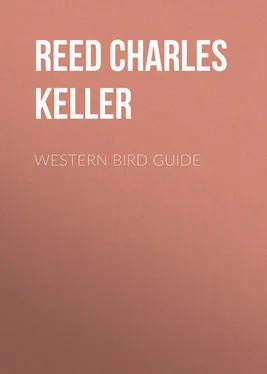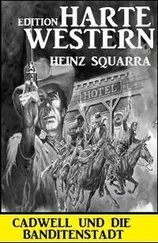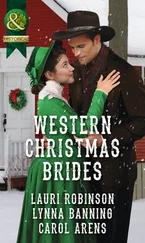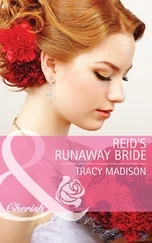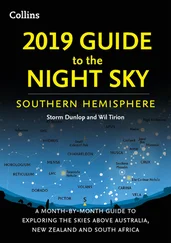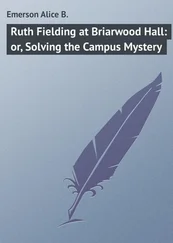Charles Reed - Western Bird Guide
Здесь есть возможность читать онлайн «Charles Reed - Western Bird Guide» — ознакомительный отрывок электронной книги совершенно бесплатно, а после прочтения отрывка купить полную версию. В некоторых случаях можно слушать аудио, скачать через торрент в формате fb2 и присутствует краткое содержание. Жанр: foreign_antique, foreign_prose, на английском языке. Описание произведения, (предисловие) а так же отзывы посетителей доступны на портале библиотеки ЛибКат.
- Название:Western Bird Guide
- Автор:
- Жанр:
- Год:неизвестен
- ISBN:нет данных
- Рейтинг книги:3 / 5. Голосов: 1
-
Избранное:Добавить в избранное
- Отзывы:
-
Ваша оценка:
- 60
- 1
- 2
- 3
- 4
- 5
Western Bird Guide: краткое содержание, описание и аннотация
Предлагаем к чтению аннотацию, описание, краткое содержание или предисловие (зависит от того, что написал сам автор книги «Western Bird Guide»). Если вы не нашли необходимую информацию о книге — напишите в комментариях, мы постараемся отыскать её.
Western Bird Guide — читать онлайн ознакомительный отрывок
Ниже представлен текст книги, разбитый по страницам. Система сохранения места последней прочитанной страницы, позволяет с удобством читать онлайн бесплатно книгу «Western Bird Guide», без необходимости каждый раз заново искать на чём Вы остановились. Поставьте закладку, и сможете в любой момент перейти на страницу, на которой закончили чтение.
Интервал:
Закладка:
Chester A. (Chester Albert) Reed, Harry F. Harvey, Rex I. Brasher
Western Bird Guide / Birds of the Rockies and West to the Pacific
The numbers and names used in this book are those adopted by the American Ornithologists’ Union, and are known both in this country and abroad. The lengths given are averages; our small birds often vary considerably and may be found either slightly larger or smaller than those quoted.
On some of the pages a number of sub-species are mentioned. Sub-species often cause confusion, because they are usually very similar to the original; they can best be identified by the locality in which they are found.
The nests and eggs are described, as they often lead to the identity of a bird. We would suggest that you neatly, and with ink, make a cross against the name of each bird that you see in your locality, and also that you write at the top of the page the date of the arrival and departure of each bird as you note it; these dates vary so much in different localities that we have not attempted to give them. As many will not wish to soil their books we would suggest that they have a leather-covered copy for the library and a cloth one for pocket use.
DIVING BIRDS – Order Pygopodes
GREBES – Family Colymbidæ
WESTERN GREBE
This is the largest of the grebe family. In summer the back of the neck is black, but in winter it is gray like the back.
Nest.– A floating mass of decayed rushes, sometimes attached to the upright stalks; 2 to 5 pale bluish white eggs are laid, usually much nest stained (2.40 × 1.55). Breeding in colonies.
Range.– Western North America, from the Dakotas and Manitoba to the Pacific, and north to southern Alaska.
HOLBOELL GREBE
This is next to the Western Grebe WESTERN GREBE 1. Æchmophorus occidentalis. 25 to 29 inches This is the largest of the grebe family. In summer the back of the neck is black, but in winter it is gray like the back. Nest. – A floating mass of decayed rushes, sometimes attached to the upright stalks; 2 to 5 pale bluish white eggs are laid, usually much nest stained (2.40 × 1.55). Breeding in colonies. Range. – Western North America, from the Dakotas and Manitoba to the Pacific, and north to southern Alaska.
in size, both being larger than any of the others. In summer, they are very handsomely marked, as shown in the illustration, but in winter have the usual dress of gray and white.
Nest.– Similar to above, the eggs averaging smaller (2.35 × 1.25).
Range.– North America, breeding from northwestern Alaska, in the interior of Canada and North Dakota. Winters usually on the coasts.
HORNED GREBE
In winter this Grebe is one of the plainest in its dress of gray and white, but summer brings a great change, making it one of the most attractive, with its black, puffy head, and buffy white ear tufts, the front of the neck a rich chestnut color. Their food consists almost wholly of small fish.
Nest.– Is a loosely built mass of vegetation floating in the bog and water holes of the western prairies. The eggs, 3 to 7 in number, are brownish yellow (1.70 × 1.15).
Range.– Breeds from Dakota and Illinois northward; winters to the Gulf of Mexico.
EARED GREBE
This species is rarely found as far east as the Mississippi River. In summer the neck is black, lacking the chestnut color of the former. It can always be distinguished from the Horned HORNED GREBE 3. Colymbus auritus. 14 inches In winter this Grebe is one of the plainest in its dress of gray and white, but summer brings a great change, making it one of the most attractive, with its black, puffy head, and buffy white ear tufts, the front of the neck a rich chestnut color. Their food consists almost wholly of small fish. Nest. – Is a loosely built mass of vegetation floating in the bog and water holes of the western prairies. The eggs, 3 to 7 in number, are brownish yellow (1.70 × 1.15). Range. – Breeds from Dakota and Illinois northward; winters to the Gulf of Mexico.
by the upper mandible being straight on the top.
Nest.– In colonies similar to the above, laying from 3 to 8 eggs, which are usually nest stained to a brownish cream color.
Range.– From the Mississippi to the Pacific, nesting from Texas to British Columbia.
PIED-BILLED GREBE
This species cannot be mistaken for any others of the grebes in any plumage, because of its stout compressed bill and brown eyes, all the others having red eyes. In summer the bill is nearly white, with a black band encircling it; the throat is black; breast and sides brownish-gray; the eye encircled with a white ring.
Nest.– Made of a mass of decayed weeds and rushes, floating in shallow ponds or on the edges of lakes among the rushes. Five to 8 brownish white eggs are laid (1.70 × 1.18).
Range.– Whole of N. A., breeding in small colonies or pairs.
LOON; GREAT NORTHERN DIVER
In shape and motions the loons very much resemble the grebes WESTERN GREBE 1. Æchmophorus occidentalis. 25 to 29 inches This is the largest of the grebe family. In summer the back of the neck is black, but in winter it is gray like the back. Nest. – A floating mass of decayed rushes, sometimes attached to the upright stalks; 2 to 5 pale bluish white eggs are laid, usually much nest stained (2.40 × 1.55). Breeding in colonies. Range. – Western North America, from the Dakotas and Manitoba to the Pacific, and north to southern Alaska.
, except in size, being much larger. The common loon is the most beautiful of them all, having a velvety black iridescent head with slashes of white on the throat and neck and spots of white on the wings and back.
Nest.– Usually built under some shelter of bushes or rushes on the edge of some of the larger ponds or lakes. The two eggs are a yellowish brown, with black spots (3.50 × 2.25).
PACIFIC LOON
This species differs from the Loon LOON; GREAT NORTHERN DIVER 7. Gavia immer. 31 to 35 inches In shape and motions the loons very much resemble the grebes WESTERN GREBE 1. Æchmophorus occidentalis. 25 to 29 inches This is the largest of the grebe family. In summer the back of the neck is black, but in winter it is gray like the back. Nest. – A floating mass of decayed rushes, sometimes attached to the upright stalks; 2 to 5 pale bluish white eggs are laid, usually much nest stained (2.40 × 1.55). Breeding in colonies. Range. – Western North America, from the Dakotas and Manitoba to the Pacific, and north to southern Alaska. , except in size, being much larger. The common loon is the most beautiful of them all, having a velvety black iridescent head with slashes of white on the throat and neck and spots of white on the wings and back. Nest. – Usually built under some shelter of bushes or rushes on the edge of some of the larger ponds or lakes. The two eggs are a yellowish brown, with black spots (3.50 × 2.25).
in having the crown gray, and white streaks down the back of the neck, and in the color reflections of the black on the head. It is a trifle smaller also.
Интервал:
Закладка:
Похожие книги на «Western Bird Guide»
Представляем Вашему вниманию похожие книги на «Western Bird Guide» списком для выбора. Мы отобрали схожую по названию и смыслу литературу в надежде предоставить читателям больше вариантов отыскать новые, интересные, ещё непрочитанные произведения.
Обсуждение, отзывы о книге «Western Bird Guide» и просто собственные мнения читателей. Оставьте ваши комментарии, напишите, что Вы думаете о произведении, его смысле или главных героях. Укажите что конкретно понравилось, а что нет, и почему Вы так считаете.
